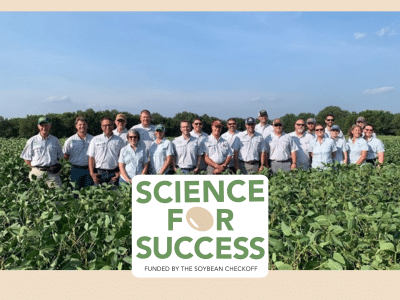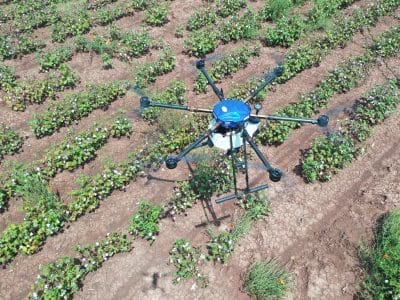Scientists at the University of Illinois at Urbana-Champaign are working on research funded by the U.S. Department of Agriculture that would remove farmer reliance on chemicals to destroy weeds.
The Illinois scientists’ goal is to create collaborative and autonomous robots that would weed fields using mechanical implements in lieu of herbicides that have lost efficacy due to repeated applications. Specifically, weeds have developed resistance to the herbicide glyphosate, used to treat commodity crops for nearly two decades.
In addition to the resistance issue, herbicides can only be applied before a crop canopies and shadows the ground beneath it. Once the crop has reached this point, the farm machinery used for application could cause damage to the growing plants. “The robots could autonomously and continuously go through and take care of the weeds underneath the canopy.”
The rapid, widespread proliferation of herbicide resistant weed byotypes, combined with a slow-down in the herbicide discovery pipeline, have left farmers with a dwindling number of chemical tools for weed management. Chowdhary and his tem of scientists hope that their research will result in farmers having a team of reliable, proficient, and cost-effective robots as a sustainable weed management option.
Researchers from a wide variety of disciplines are coming together to build AgBots that are capable of meeting this goal.
“The project is necessarily interdisciplinary,” said Chowdhary, assistant professor in the Department of Agricultural and Biological Engineering, with appointments in Electrical and Computer Engineering, Computer Science, and Aerospace Engineering, the project’s principal investigator. “When trying to solve meaningful problems you need experts from different areas to come together.”
In addition to Chowdhary’s robotics expertise, the team includes experts in machine learning, weed scientists, and environmental ecosystems specialists.
As shown in this video provided by Dr. Chowdhary, the robots currently under development can determine in real time, the difference between a cash crop and a yield-robbing pest.
Adam Davis, head of the U of I Department of Crop Sciences, and GROW-IWM crew member, provides agronomic expertise with his years of weed management experience.
The potential impact this project could have on farmers and the agricultural industry as a whole could be huge, according to Davis.
“This project could revolutionize Integrated Weed Management, giving farmers a novel, highly effective tool for physical weed control while reducing reliance on, and improving stewardship of, herbicides,” Davis said.
With researchers from both the College of Agricultural, Consumer and Environmental Sciences (ACES) and College of Engineering (COE), this project is an exciting example of the innovative cross-cutting research at the University of Illinois Urbana-Champaign that underlines the need for the recently formed Center for Digital Agriculture. The USDA provided $886,157 to fund the project. The project was evaluated and funded through the National Science Foundation and National Institute of Food and Agriculture (NIFA) joint Cyber Physical Systems program.
Credits:
News writer: Allie Arp, Coordinated Science Laboratory, aarp@illinois.edu
Date: Oct. 4, 2018
Edits: Claudio Rubione AREA-WIDE project, outreach for GROW-IWM


